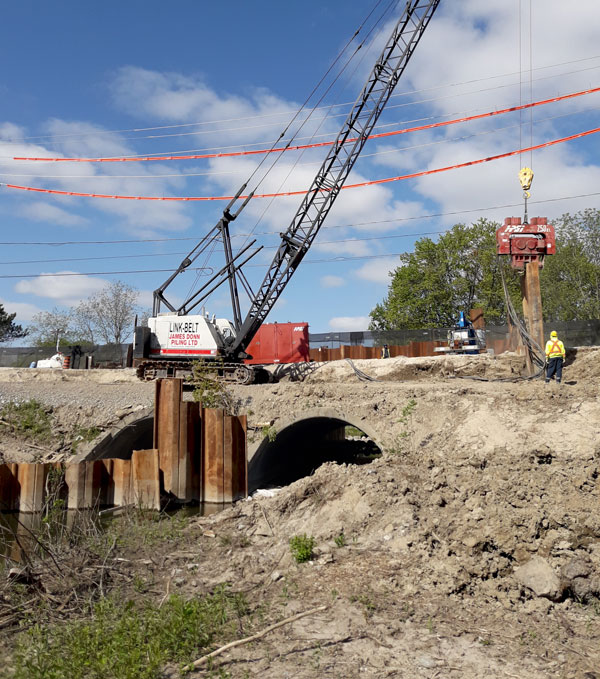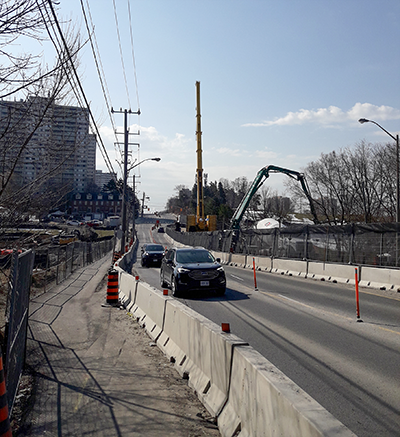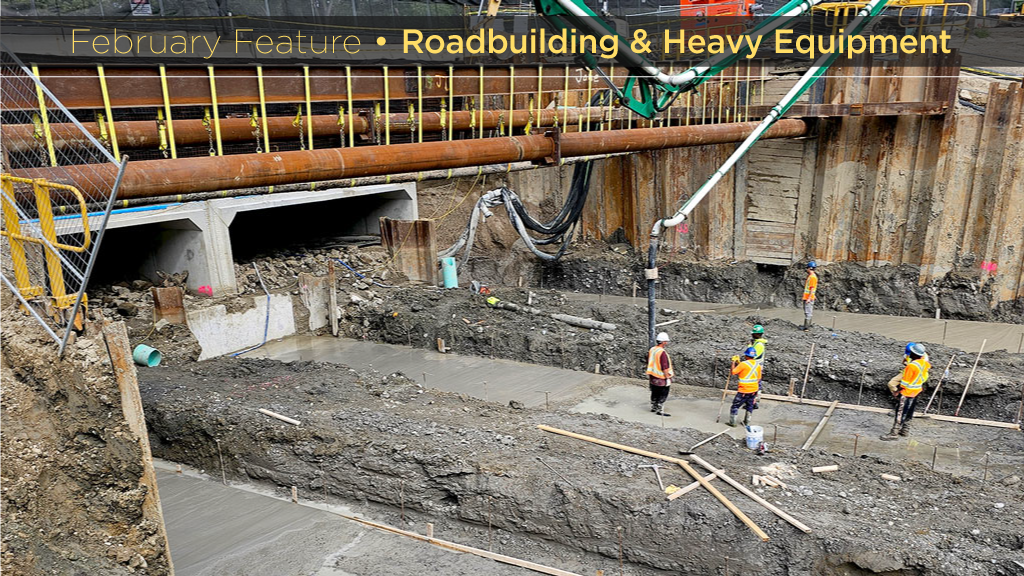Flowing south and then west where it connects with the much larger Humber River, which flows into Lake Ontario, Toronto’s Black Creek is a waterway under considerable pressure, strain and is vulnerable to environmental degradation.
Not adding to that degradation and implementing a number of remediation measures to improve the creek was a key priority of the two-year, two-stage, $12.8-million Jane Street culvert replacement project which just wrapped up this past fall.
Designed by Associated Engineering Limited, the project was the installation of a prefabricated 41.57-metre-long twin cell “open footing” concrete box culvert which conveys Black Creek from the east to the west side of Jane Street.
The general contractor was Trisan Construction and Doug Dixon & Associates Inc. was the contract administrator.
Planning for the project started more than a decade ago, in 2013, but was paused to allow critical work for a basement flooding program in the area to proceed.
Design work resumed in 2019, says Jennifer Graham Harkness, chief engineer and executive director of Toronto’s engineering and construction services department.
As part of the City of Toronto’s state of good repair program, the original 1960s corrugated culvert (later extended in 1984) was identified as reaching the end of its service life, she says.

Besides the obvious needs for a new culvert, “the project also created the opportunity to increase the creek’s water flow capacity and to enhance the watercourse.”
Grade control structures, or riffles, were added to the creek to reduce the energy of the water flow as it approaches the culvert. As well, rip rap/gabion stones were also placed between the riffles and through the new culvert.
Use of those materials helps reduce the speed of the creek and also creates resting and holding areas for fish, facilitating easier passage through the culvert, says Graham Harkness.
The banks of the creek were also restored with Terraseed and erosion control blankets, followed by tree and shrub planting.
As per standard construction procedures when working near or in waterways, silt fencing was installed to prevent sediment from entering the watercourse and sheet pile walls to control the water flow. Also, vehicle refuelling and maintenance couldn’t be conducted within 30 metres of the creek, she says.

Important as the environmental component was, there were other significant challenges, notably the need to keep Jane Street partially open at all times, says Graham Harkness.
“When work began, crews recognized the significant impact on residents and extended work hours to expedite construction and ultimately minimize inconvenience for the public.”
At the peak of the project there were two shifts each day from 7 a.m. to 11 p.m., with nine workers during the day and five on the evening shift, she says.
Not inconveniencing the public also meant initiatives to lessen the impact on the Oakdale Golf & Country Club. Located on the west side of Jane Street near the creek, it was the site of the RBC Canadian Open golf championship in 2023.
In the lead-up to the project there were negotiations with the golf club to mitigate any impacts. As a result, work on the west side of Jane Street got underway in 2022 and was completed before the start of the golf tournament.
Keeping the street partially open at all times was achieved via a “protection system” which consisted of steel sheet piling driven to a depth of five metres below the culvert foundation level.
Not only did the protection system ensure the street remain partially open, while a portion of the old culvert was removed and replaced, it ensured the open lanes remained stable during the adjacent excavation work, says Graham Harkness.
Other challenges included managing both creek flows and delays after storm events and groundwater flows, plus supporting a gas main and working with Toronto Hydro on street light relocations, she says.
Associated work included the installation of temporary flow passage systems for the creek and removing an existing sewer bypass.



Recent Comments